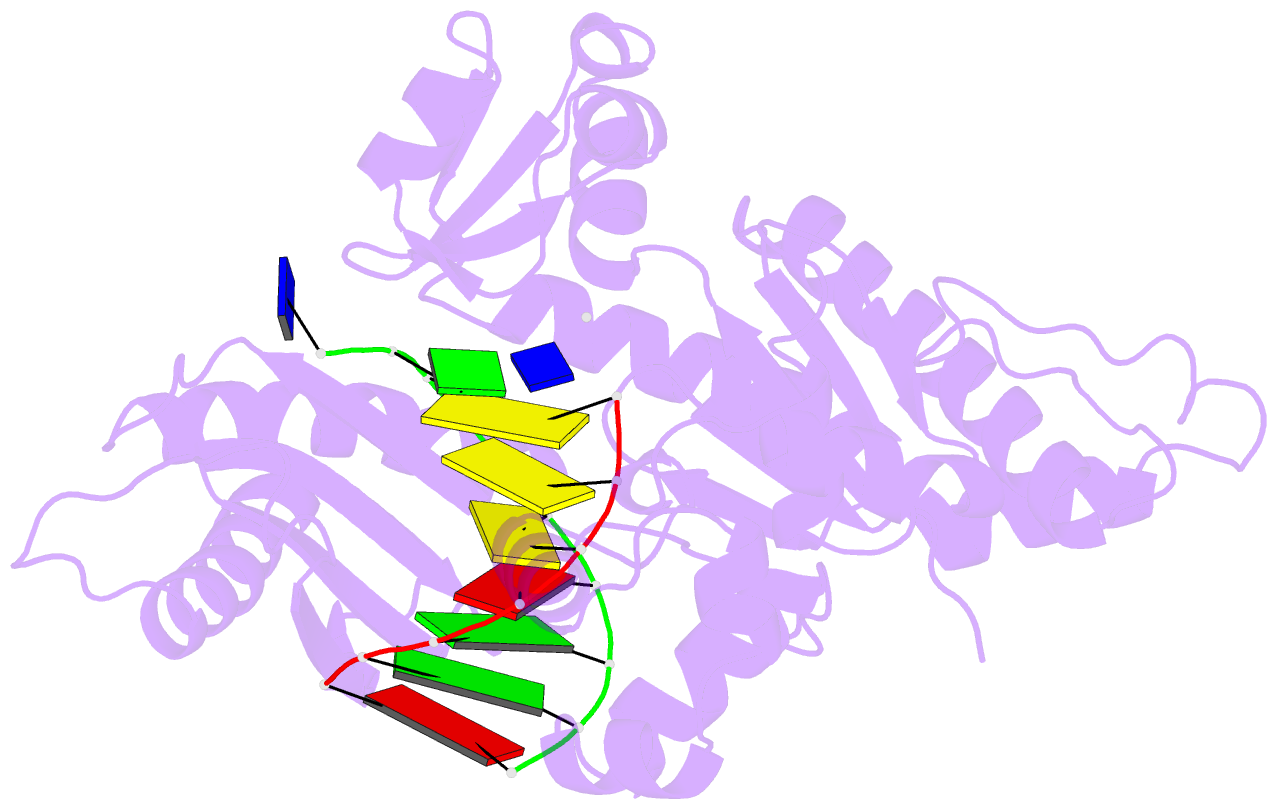Summary information and primary citation
- PDB-id
- 4fs1; SNAP-derived features in text and JSON formats;
DNAproDB
- Class
- transferase-DNA
- Method
- X-ray (2.5 Å)
- Summary
- Base pairing mechanism of n2,3-ethenoguanine with dttp by human polymerase iota
- Reference
- Zhao L, Pence MG, Christov PP, Wawrzak Z, Choi JY, Rizzo CJ, Egli M, Guengerich FP (2012): "Basis of Miscoding of the DNA Adduct N2,3-Ethenoguanine by Human Y-family DNA Polymerases." J.Biol.Chem., 287, 35516-35526. doi: 10.1074/jbc.M112.403253.
- Abstract
- N(2),3-Ethenoguanine (N(2),3-εG) is one of the exocyclic DNA adducts produced by endogenous processes (e.g. lipid peroxidation) and exposure to bioactivated vinyl monomers such as vinyl chloride, which is a known human carcinogen. Existing studies exploring the miscoding potential of this lesion are quite indirect because of the lability of the glycosidic bond. We utilized a 2'-fluoro isostere approach to stabilize this lesion and synthesized oligonucleotides containing 2'-fluoro-N(2),3-ε-2'-deoxyarabinoguanosine to investigate the miscoding potential of N(2),3-εG by Y-family human DNA polymerases (pols). In primer extension assays, pol η and pol κ replicated through N(2),3-εG, whereas pol ι and REV1 yielded only 1-base incorporation. Steady-state kinetics revealed that dCTP incorporation is preferred opposite N(2),3-εG with relative efficiencies in the order of pol κ > REV1 > pol η ≈ pol ι, and dTTP misincorporation is the major miscoding event by all four Y-family human DNA pols. Pol ι had the highest dTTP misincorporation frequency (0.71) followed by pol η (0.63). REV1 misincorporated dTTP and dGTP with much lower frequencies. Crystal structures of pol ι with N(2),3-εG paired to dCTP and dTTP revealed Hoogsteen-like base pairing mechanisms. Two hydrogen bonds were observed in the N(2),3-εG:dCTP base pair, whereas only one appears to be present in the case of the N(2),3-εG:dTTP pair. Base pairing mechanisms derived from the crystal structures explain the slightly favored dCTP insertion for pol ι in steady-state kinetic analysis. Taken together, these results provide a basis for the mutagenic potential of N(2),3-εG.





